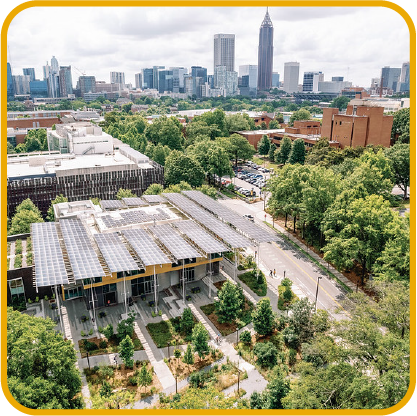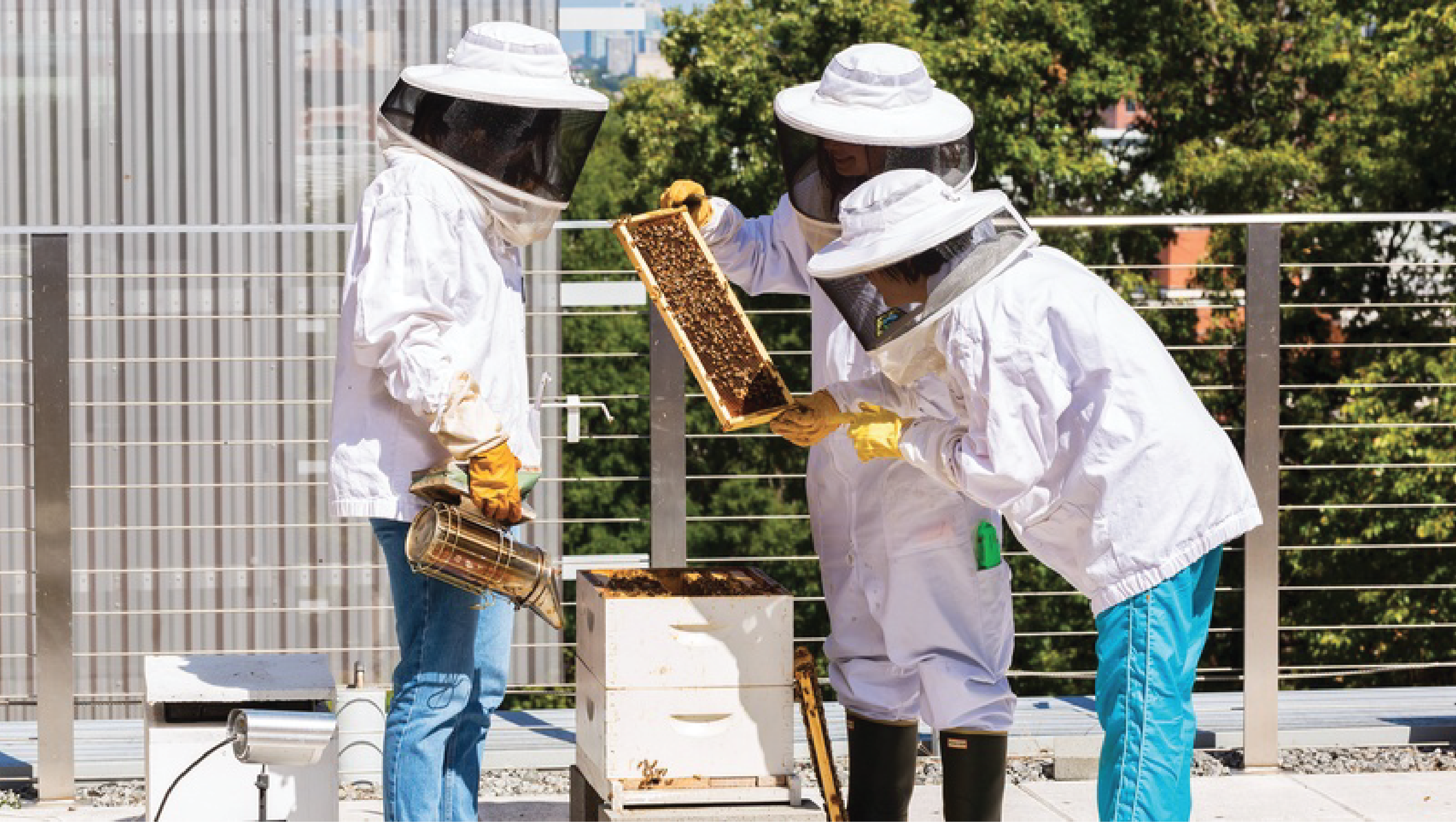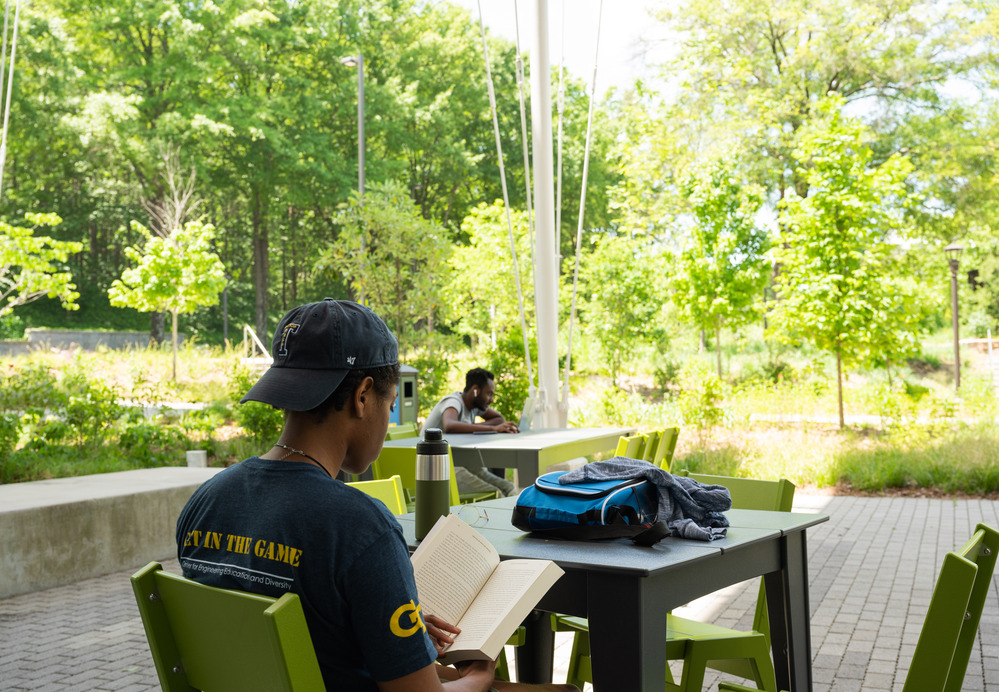(text and background only visible when logged in)

Photo courtesy of Gregg Willett

Honoring the Land on Which We Build and Its Connection to Community, Ecology, and Sustenance
The Place Petal focuses on protecting the environmental legacy of our site—the Piedmont Forest region—an area defined by diverse plants and soils rather than concrete. As our cities expand, the Place Petal challenges us to minimize harm by restoring biodiversity, prioritizing pedestrians, and preserving natural landscapes. It does so through four key Imperatives:
Limits to Growth: Not Taking More than We Need
The Living Building Challenge prioritizes building on previously developed land to minimize environmental impact. The Limits to Growth Imperative of LBC 3.1 allowed construction only on greyfields or brownfields, excluding ecologically sensitive areas like wetlands, old-growth forests, and prime farmland. Projects were required to restore the natural landscape without petrochemical fertilizers or pesticides.
How Does The Kendeda Building Accomplish This?
The Kendeda Building sits on a former parking lot, where restoring compacted soil was a challenge. Soil testing required minimal amendments, and Andropogon Associates designed a landscape that mimics natural water flows, which improves water retention. The site now thrives with native plants and edible species, enhancing biodiversity and resilience.
Urban Agriculture: On-Site Sustenance
The Urban Agriculture Imperative of LBC 3.1 required projects to dedicate a portion of their site to food production based on their floor-to-area ratio.
How Does The Kendeda Building Accomplish This?
For The Kendeda Building, this means 20% of the site—about 12,600 square feet—supports urban agriculture.
Due to shading from trees, limited space, and a steep slope, traditional row crops weren’t viable. Instead, the team designed a mixed approach that integrated food production with site constraints:
- Foraging landscapes with edible plants
- A rooftop garden with blueberry bushes
- Fruiting vines growing along the building’s walls

Rooftop Pollinators
Under LBC 3.1, project teams could count land used to raise livestock, poultry, or other eco-system supporting animals towards the urban agriculture requirement. Georgia Tech’s Urban Honey Bee Project led by Dr. Jennifer Leavey through the College of Sciences was a natural fit for the rooftop garden. The flowering plants that nourish the on-site bee population contribute to the building’s required square footage for urban agriculture. As a recognized Bee Campus USA institution, Georgia Tech reinforces its commitment to pollinator health and ecological stewardship,
Beekeeper in Residence
Hundreds of thousands of honeybees make their home atop The Kendeda Building for Innovative Sustainable Design, and it’s up to our Beekeeper in Residence to make sure the hives thrive.
Janelle Dunlap was hired in October 2023 as the Urban Honey Bee Project's first-ever beekeeper in residence. Throughout her one-year residency, she conducted research into the pollinator's place in our ecosystem and how beekeeping may offer relief to veterans dealing with post-traumatic stress disorder, while connecting with the bees through art.
Student Volunteers
The Kendeda Building's urban agriculture is possible thanks to our dedicated student volunteers from an undergraduate group (S.O.S.) and a graduate group (BBUGS). Our student-led urban farming program also improves Health and Happiness of the volunteers!

Habitat Exchange: Conserving Natural Spaces
To balance the impact of construction, this Imperative of LBC 3.1 required projects to preserve an equal amount of land through a land trust. The Kendeda Building met this goal by protecting 1.35 acres of natural habitat through Living Future’s Habitat Exchange Program.
Human-Powered Living: Reducing the Impact of our Movements
The goal of this Imperative was to provide resources and connectivity for those arriving on site by walking, biking, or taking public transit. The Kendeda Building promotes sustainable mobility with:
- Pedestrian-friendly design.
- Bicycle storage and two showers for bike commuters.
- Multiple Georgia Tech bus route stops (someone can get from Hartsfield-Jackson International Airport to The Kendeda Building with just one transfer at the Midtown MARTA station).